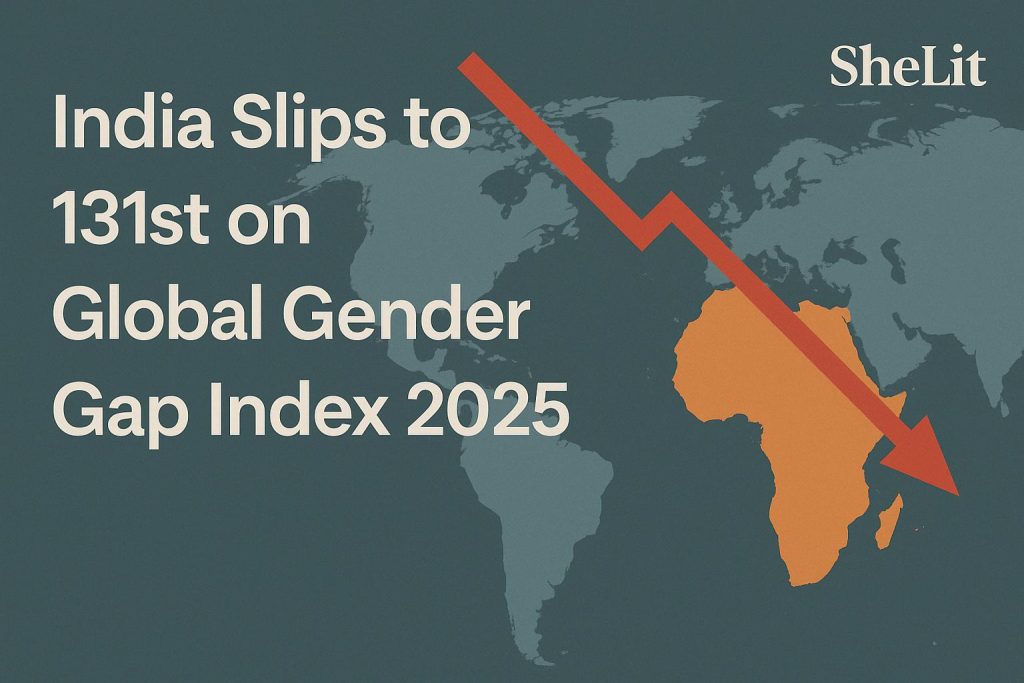June 15, 2025 | Gender Equality | SheLit Desk
India has fallen to 131st place out of 148 countries in the World Economic Forum’s Global Gender Gap Index 2025, with a gender parity score of 64.4%. This marks a decline from its 2024 position of 129th out of 146 nations.
By the Numbers: What’s Behind the Slide?
- Ranking Shift: India is now 131st of 148 countries, down from 129th in 2024.
- Why the drop? The overall decline stems largely from other countries improving faster, not a reversal of India’s own progress .
Index Breakdown
The report evaluates four dimensions:
- Educational Attainment
- Health & Survival
- Economic Participation & Opportunity
- Political Empowerment
India has closed about 64% of its overall gender gap, compared to the global average of 68.5% .
Education & Health
India performs relatively well here. Educational parity is nearing completion, and health indicators like survival and access are strong.
Economic Participation
Still a weak link—India scores just 39.8% parity, placing it among the lowest globally and regionally.
Political Empowerment
Stalled progress: only 25.1% parity, with women occupying just 6.9% of ministerial roles and 17.2% of parliamentary seats, though head-of-state parity is moderate.
Global Outlook & Why It Matters
- The global gender gap remains 31.5% open, with current patterns indicating a 134-year wait to reach full parity.
- India’s lagging performance is especially stark compared to neighbors like Bangladesh (99th), Nepal (117th), and Sri Lanka (122nd).
Implications & Urgency
- Economic risk: Low female workforce participation curtails GDP growth and overall economic potential.
- Political exclusion: Underserved representation limits policy influence on women’s health, rights, and opportunities.
- Social inertia: Despite improvements in education and health, societal norms still restrict women’s upward mobility in work and leadership.
What India Can Do
- Boost workforce inclusion through skill training, entrepreneurship support, and workplace reforms.
- Accelerate political representation by implementing quotas and leadership development for women.
- Bridge educational gaps via targeted literacy and higher education outreach for girls in underserved regions.
- Rebalance unpaid labor with policies like universal childcare, parental leave, and flexible work options.
For SheLit Readers
India’s fall in ranking is a wake-up call: marginal score gains aren’t enough if progress elsewhere outpaces us. Moving forward requires targeting economic and political imbalances—not just focusing on education and healthcare, where we already lead.

